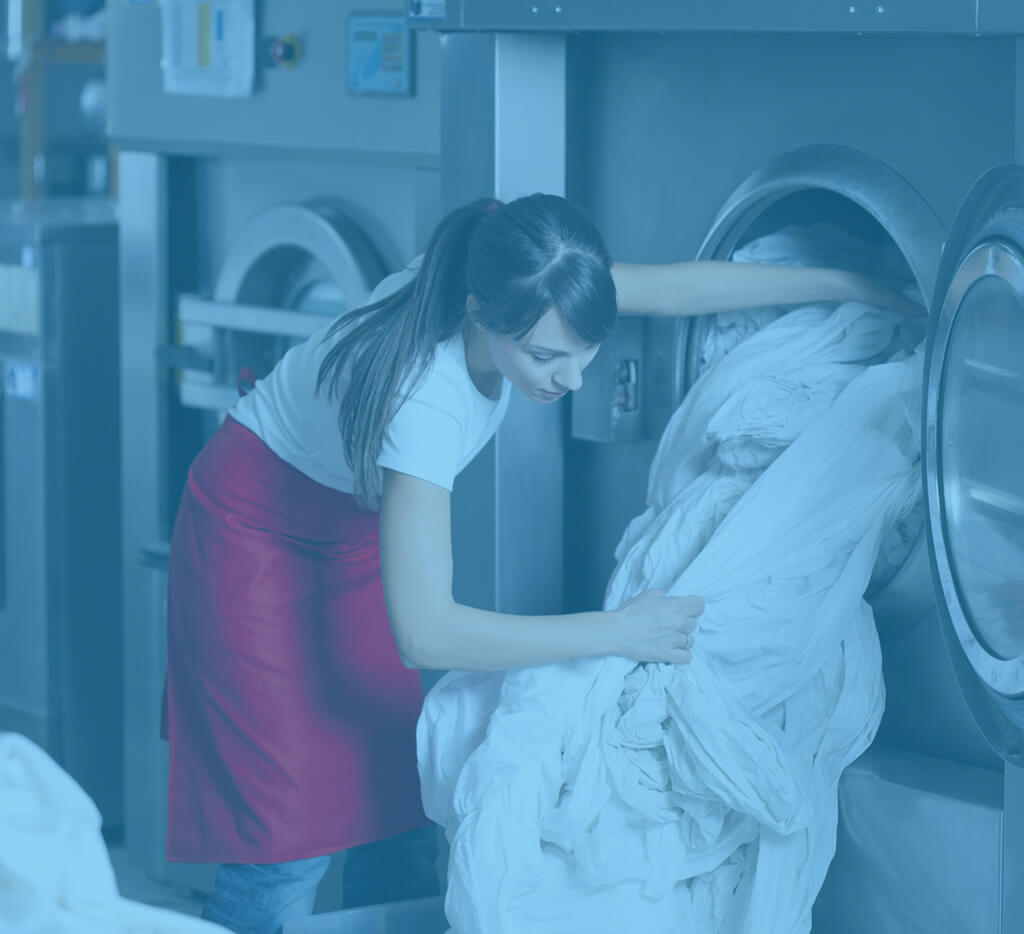Laundry habits might seem like an unlikely place to find new ways to reduce CO2 emissions. Yet despite being mundane and easily overlooked, a few basic changes to the way you do your laundry can reduce your carbon footprint.
One new technology already helping to reduce the carbon footprint of laundromats is our app based laundry payment service, Shinepay.
How can an app help reduce a laundromat’s carbon emissions? Well, three ways:
- Skip the coins: Coins are more than just a hassle. They end up generating carbon emissions as they must be constantly transported on vehicles, consume electricity being automatically counted, and require infrastructure such as ATMs and change machines to withdraw. What’s more, coins represent a form of environmental pollution.
- Ditch the cards: Why bother with another senseless piece of plastic in your wallet? Manufacturing plastic creates CO2 emissions, and too many of those plastic cards end up polluting the environment or clogging landfills.
- Focus on the laundry: Shinepay dramatically simplifies payments for laundromat owners and customers alike. This frees up both to focus on getting their laundry done as efficiently and effectively as possible, reducing unnecessary expenditures.
What Is CO2?
CO2 is the chemical shorthand for the molecule carbon dioxide. It occurs naturally in the Earth’s atmosphere, where it takes the form of an odorless, colorless gas.
Produced by all aerobic organisms as an essential part of respiration, CO2 is an element essential to life as we know it.
In addition to organisms, CO2 is also produced in the chemical process of combustion. As a result, CO2 is released into the atmosphere as a byproduct of a wide variety of machinery, including automobiles, power plants, and any device which relies on a combustion engine.
Despite being a natural component of earth’s atmosphere, CO2 is classified as a greenhouse gas. Greenhouse gases such as CO2 trap heat in the planet’s atmosphere, slowing the rate at which it radiates into space.
This effect contributes to a rise in the planet’s overall temperatures, speeding up climate change through global warming.
Since the Industrial Revolution, human activity has released large quantities of CO2 into the atmosphere. The large quantities of CO2 produced by our evolving technology have contributed to the planet’s rising concentrations of atmospheric CO2.
With an eye on the health of our planet, environmentally savvy individuals and companies are banding together to reduce their CO2 emissions for the sake of our environment.
How Does Laundry Affect The Environment?

It might not seem like doing your laundry has much of an impact on the environment, but keeping our clothes and fabrics clean actually extracts quite a toll on the environment.
Here’s how:
- Power Consumption: Every time you use your washer or dryer, you’re consuming electricity. For most of us, this means actively increasing our electricity demand and (theoretically) forcing a power plant to emit more CO2.
- Water Consumption: Doing laundry takes quite a bit of water. Moving that water around requires electricity, which means CO2 emissions. It also means less available fresh water, and likely more work (and more emissions) for your local wastewater treatment plant.
- Transport Costs: Laundry is heavy. If you have to go to a laundromat, transporting it by vehicle or even public transit means adding to your carbon footprint. Even taking it down the elevator in your apartment building adds emissions.
- Pollution: There is a lot of stuff associated with laundry, such as detergents, fabric softeners, dryer sheets, baskets, clothes hangers, all sorts of gizmos and gadgets. All of that stuff has a carbon footprint in its manufacturing and transport. Worse, much of it is not properly disposed of, creating sources of plastic and chemical pollution. Meanwhile, every load of laundry produces a sizable quantity of wastewater which must be treated or disposed of.
How Can I Reduce The Environmental Impact Of My Laundry Habits?
A growing practice known as Green Laundry focuses on educating people about the environmental impact of their laundry habits and showing them how to minimize the environmental impact of laundry day.
Done right, Green Laundry can reduce your environmental impact and even help you save a bit of money.
Here are the fundamental tenets of Green Laundry:
- Be as efficient as possible with the size of your loads and the settings (temperature, cycle type, etc.) on your washing machine. Use cold water as much as possible.
- Minimize dryer time by hanging up clothes to line dry.
- Reduce how frequently you wash clothes by re-wearing items which aren’t noticeably dirty.
- Hand wash whenever possible.
- Avoid dry cleaners.
- Minimize waste from laundry products and properly dispose of all laundry related waste.
Taking the time to learn how your laundry habits affect the environment is all it takes to help you work smarter and not harder when it comes to laundry day.
What Other Ways Can I Reduce CO2 Emissions Besides Changing My Laundry Habits?
If you look at the four ways that laundry affects the environment we laid out above, you might notice that it’s a list of things which could apply to many of the things we do everyday.
Our laundry habits are far from being the only thing which consume water and power, require transportation, and generate pollution.
Spend some time reflecting on what you do in the average day and you’re likely to find yourself doing all four of these things on a regular basis!
Thankfully, you’re now armed with some powerful knowledge. The same sort of steps you take to minimize the environmental impact of your laundry habits can be put to work to help you reduce your environmental impact and carbon footprint from any number of any day activities.
How Can I Reduce CO2 Emissions From My Laundromat Or Apartment Building?
If you’re the owner or manager of an apartment building or laundromat and want to reduce the CO2 emissions from your property, one excellent shortcut is Shinepay.
Shinepay lets you skip all sorts of unnecessary hassle, expense, and carbon emissions by liberating you from dealing with huge amounts of coins or constantly issuing plastic cards.
Join the modern world with a modern payment system -- and do your part for the environment while you’re at it.
Reducing Environmental Impact With Shinepay FAQ
1. What’s the best way to make environmentally friendly laundry detergent?
Homemade laundry detergent is sometimes considered to be more environmentally friendly than store bought brands, which often contain a wide array of chemicals such as fragrances which can be toxic and pose an environmental hazard. Laundry detergent can be made at home utilizing ingredients such as borax, baking soda, and lye soap.
2. How much money can I save by drying my clothes on a clothesline?
In the United States, it costs on average around 45 cents to run an electric dryer for 40 minutes. That means if you forego an hour in the dryer to hang that load up on the line, you’re saving about 67 cents by doing so, as well as reducing your carbon footprint. At a coin laundromat where the rate is often 25 cents for six minutes of drying time, a 42 minute spin in the dryer would cost a whopping $1.75.
3. Is washing powder more eco friendly than liquid detergent?
More important than the consistency of your detergent is its ingredient list. Both washing powder and liquid detergent can be equally environmentally friendly. It all depends on what ingredients are used.
